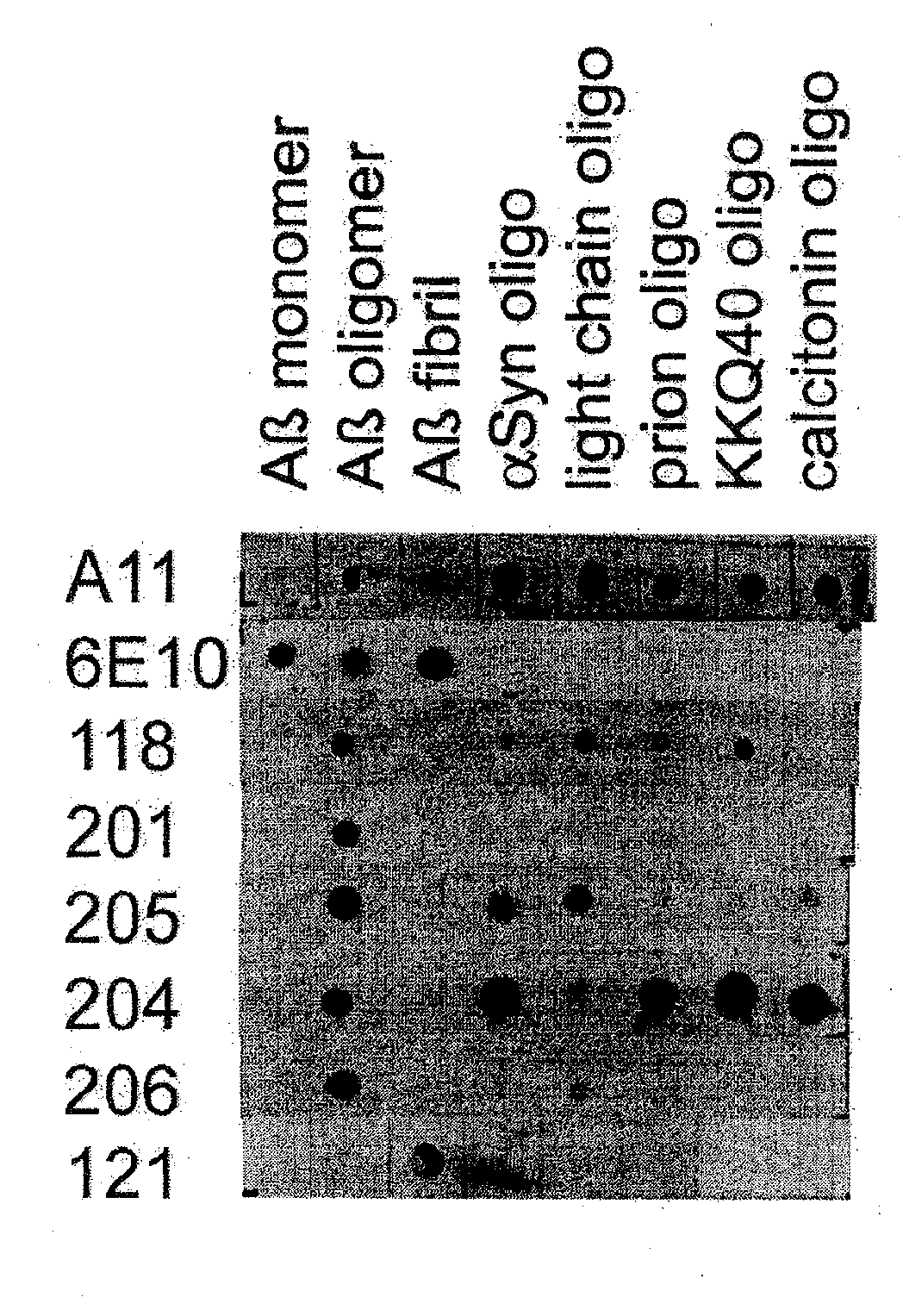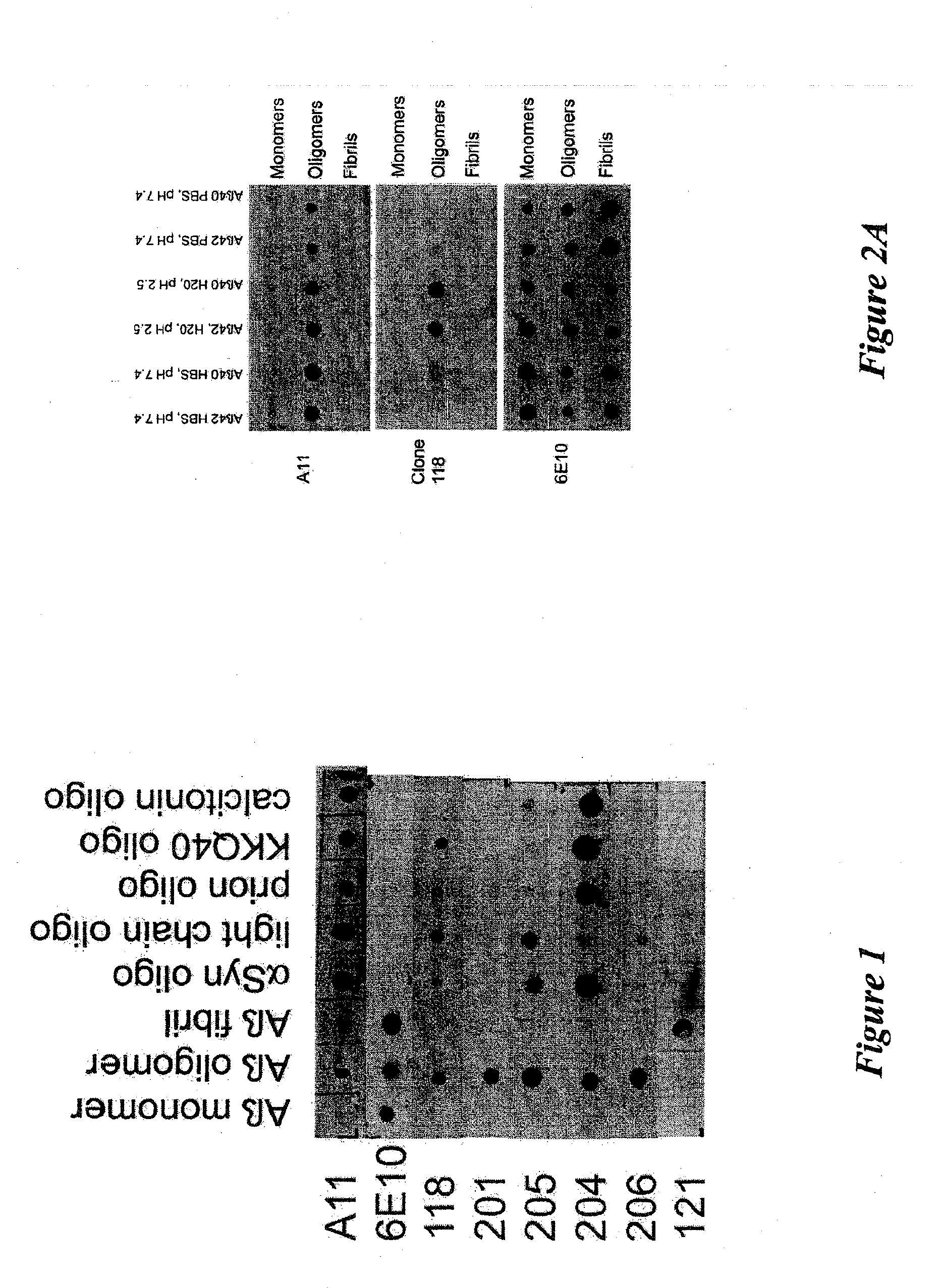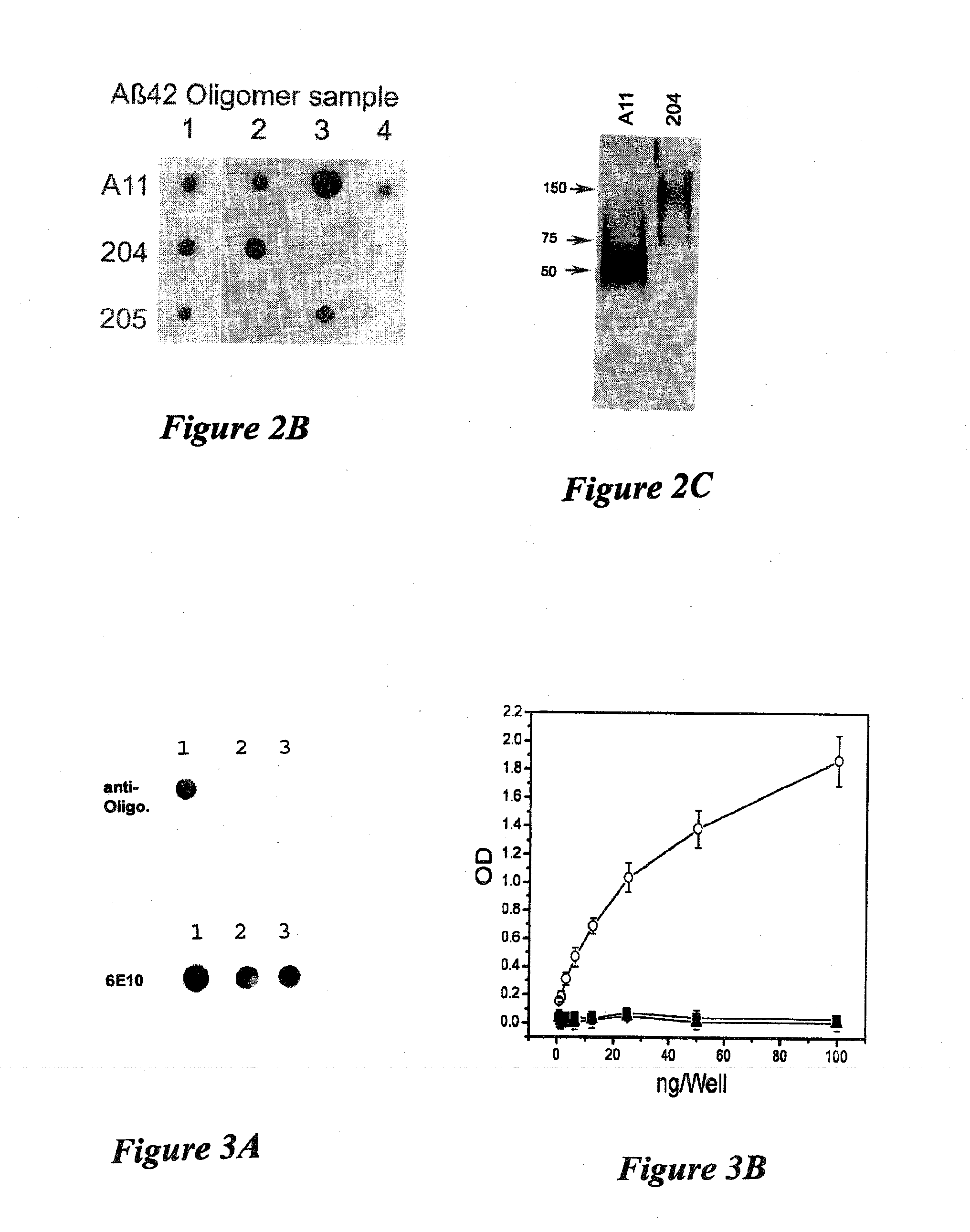Monoclonal antibodies specific for pathological amyloid aggregates common to amyloids formed from proteins of differing sequence
- Summary
- Abstract
- Description
- Claims
- Application Information
AI Technical Summary
Benefits of technology
Problems solved by technology
Method used
Image
Examples
embodiments and examples
[0070]Amyloid diseases are characterized by the accumulation of amyloid plaques or precursors to amyloid plaques in patients or the predisposition to the accumulation of amyloid plaques or precursors to amyloid plaques in patients. One of the primary constituents of amyloid plaques are amyloid peptides. The general conformation of amyloid peptides may vary from disease to disease, but often the peptide has a characteristic-pleated sheet structure. Amyloid peptides include peptides and proteins of about 10 or about 20 amino acids to about 200 amino acids in length. Though this size range is not intended as a limitation and amyloid peptides or proteins having fewer or more amino acids are contemplated in the present invention.
[0071]Prefibrillar aggregates are intermediates in the production of insoluble fibrils that accumulate in amyloid plaques of humans or animals having a disease characterized by amyloid deposits, for example, Alzheimer's disease. Prefibrillar aggregates include ag...
PUM
| Property | Measurement | Unit |
|---|---|---|
| Mass | aaaaa | aaaaa |
| Mass | aaaaa | aaaaa |
| Mass | aaaaa | aaaaa |
Abstract
Description
Claims
Application Information
 Login to View More
Login to View More - R&D
- Intellectual Property
- Life Sciences
- Materials
- Tech Scout
- Unparalleled Data Quality
- Higher Quality Content
- 60% Fewer Hallucinations
Browse by: Latest US Patents, China's latest patents, Technical Efficacy Thesaurus, Application Domain, Technology Topic, Popular Technical Reports.
© 2025 PatSnap. All rights reserved.Legal|Privacy policy|Modern Slavery Act Transparency Statement|Sitemap|About US| Contact US: help@patsnap.com



